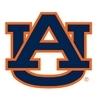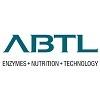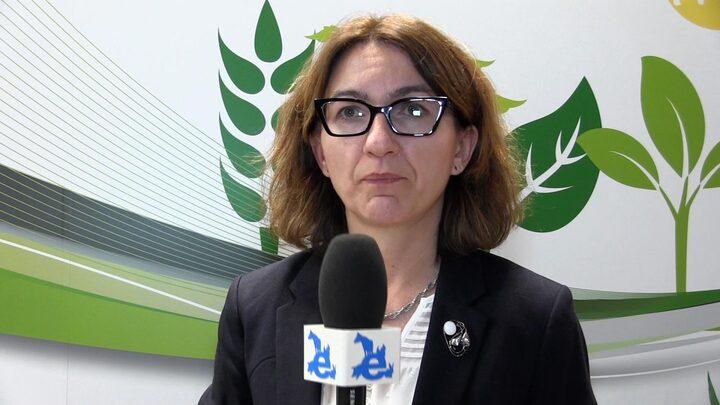Check out what is new in Poultry Industry
Find the best technical articles, forums, and videos on Poultry Industry at Engormix. Enter now and interact with the world's largest agricultural social network.
.jpg&w=3840&q=75)
Fernanda Castro (Evonik Animal Nutrition) explores how GuanAMINO® enhances profitability and animal performance under various conditions, from heat stress to low-crude protein diets....
Comments : 1
Recommendations: 2
1. Introduction Chickens have a well-developed trichromatic vision system composed of diverse photoreceptors and cones [1], allowing them to perceive a broad range of the color spectrum [2]. Chickens can see in ultraviolet wavelengths and perceive colors that are not visible to most mammals [3], including humans [4]. The chickens’ sharp visual capabilities allow them to effectively survey their surroundings and localize feed [5,6]. In addition, broiler chickens have shown...
Comments : 1
Recommendations: 2


Veterinary APIs Market Update: Price Trends & Key Insights – February 2025
Suggested link
Selective Elimination vs Competitive Exclusion: The Future of Antibiotic Alternatives in Food Animal Production As antimicrobial resistance (AMR) continues to threaten both public and animal health, the food animal industry is urgently shifting towards sustainable alternatives to antibiotics. Two promising strategies have emerged: Selective Elimination using bacteriophages or phage lysins and Competitive Exclusion using probiotics. Both methods target harmful bacteria but...
Comments : 0
Recommendations: 0
In recent years, the poultry industry has been increasingly interested in determining gender of newly hatched chicks so birds can be sorted into separate sex groups for rearing. However, at hatch, accurately sexing chicks is difficult as both sexes exhibit similar characteristics until approximately one month of...
Comments : 0
Recommendations: 0
Introduction to Immunity Immunity refers to the body's ability to resist or defend against infections, diseases, and other unwanted biological invasions. There are two main types of immunity. Innate immunity is the host's first line of defense against invading pathogens but some pathogens particularly immunosuppressive viruses have evolved sophisticated mechanisms to evade the host's innate immune responses and survive within the host. Adaptive Immunity targets...
Comments : 0
Recommendations: 2
.jpg&w=3840&q=75)
Kurt Van de Mierop (Nutrex) talks about an advanced enzyme solution that improves feed efficiency, reduces production costs, and optimizes nutrient absorption in monogastric animals.
...
Comments : 0
Recommendations: 1
.jpg&w=3840&q=75)
Patrick Van Rooij, Business Development & Market Research Manager at VNU, announces the launch of VIV Select India, a premier Feed to Food trade show catering to the Indian animal protein and livestock industry. The event will take place in April, 2026, in New Delhi, India....
Comments : 0
Recommendations: 0
INTRODUCTION As most farmers’ focus is on broiler farming for meat, cockerel production has not received the attention it deserves over the years. With increasing global human population, it is necessary to boast the production of animal and poultry that will meet the urgent market need for animal protein (Steinfeld, 2003). One approach to tackle this is to stimulate the cockerel industry, the neglected area of poultry production. Protein is a crucial component of chicken...
Comments : 0
Recommendations: 0
INTRODUCTION Nutrient requirement for any ingredient is defined as the amount of that nutrient which must be supplied in the diet to meet the needs of the normal health of an animal in an environment compatible with good health. It can also be said to be the amount of a given nutrient required by the animal to maximize performance. Formulation of a balanced diet is fundamental to economical poultry production, and this process depends on knowledge of nutrient requirements of poultry...
Comments : 0
Recommendations: 0
As the global population continues to grow, the demand for high-quality protein in animal nutrition is increasing. The broiler industry, as one of the largest and fastest-growing livestock sectors, faces significant challenges in securing sustainable and cost-effective feed ingredients. Conventional protein...
Comments : 3
Recommendations: 2
.jpg&w=3840&q=75)
Struggling with feed pellets breaking apart in water? Dealing with excessive dust in poultry, swine, or cattle feed? Magicoh Pellet Binder strengthens pellets, improves water stability, and enhances feed quality. Hear what Mr. Ronnick Fong (Hangzhou De Mark) has to say about it...
Comments : 0
Recommendations: 0
Introduction Fat is an essential component in broiler feed, serving as a highly concentrated energy source and playing a crucial role in growth performance, feed efficiency, and meat quality. Selecting the right fat source is critical to balancing cost-effectiveness, energy value, and essential fatty acid (EFA) requirements. In this article, we will compare Beef Tallow, Soya Crude Oil, and Rice Bran Crude Oil as fat sources in broiler diets, analyze their cost and nutritional...
Comments : 0
Recommendations: 0


About 128,000 laying hens don’t lie: the nutritional value of DL-methionine hydroxy analogue is 65 % that of MetAMINO®
Suggested link
.jpg&w=3840&q=75)
Nils Niedner (Evonik Animal Nutrition) explains how DL-Methionine (MetAMINO®) is the most efficient Met source to improve animal performance and profitability. Try the MetAMINO® Calculator app for easy comparison of Met sources.
...
Comments : 0
Recommendations: 1
.jpg&w=3840&q=75)
Paulo Teixeira, Vice President for Animal Nutrition in the Americas at Evonik, introduces a provocative campaign designed to spark awareness and action on sustainability. With Evonik’s deep expertise in nutrition and animal production, the campaign challenges the industry to rethink crude protein use, reduce nitrogen emissions, and drive more sustainable operations. ...
Comments : 0
Recommendations: 1
.jpg&w=3840&q=75)
Mr. Narender Reddy, CEO of Natural Remedies, explores the evolving landscape of natural solutions in the poultry industry, focusing on the increasing adoption of phytogenics as effective alternatives to antibiotics....
Comments : 0
Recommendations: 1
.jpg&w=3840&q=75)
Dr. Pradeep Krishnan (Evonik Animal Nutrition) highlights the growing importance of gut health in animal nutrition, addressing the immune challenges faced by producers. Discover how Evonik is leading the way with innovative solutions, such as probiotics and tributerins, to improve gut flora balance and integrity.
...
Comments : 1
Recommendations: 2
.jpg&w=3840&q=75)
Dr. P.K. Shukla, Head of Poultry Science at the College of Veterinary Science, Mathura, highlights the growth potential and innovation opportunities in India's poultry sector. He discusses the role of technology, AI, and public-private partnerships in driving sustainable development to meet rising demand for quality protein and support economic growth....
Comments : 0
Recommendations: 2
.jpg&w=3840&q=75)
Dr. R.K. Jaiswal, President of IB Group, oversees a fully integrated operation from grandparent to commercial chicks, retail, and soon, processing. IB Group champions sustainability with water-saving initiatives, solar energy production, and advanced Inovo vaccination in hatcheries. Their vision is to provide affordable, sustainable protein to every individual while driving innovation in poultry farming....
Comments : 0
Recommendations: 1


Veterinary APIs Market Update: Price Trends & Key Insights – February 2025
Suggested link
Evonik recently hosted THE SCIENCING EVENT, bringing together more than 100 valued customers and industry experts during the highly anticipated VIV Asia 2025 in Bangkok, Thailand. The event served as a dynamic platform for sharing cutting-edge scientific insights and exploring the latest innovations that are shaping the industry.
...
Comments : 0
Recommendations: 3
We would like to invite you to explore a company manufacturing Amino Acids & Amino Acids based products for acquisition in India.
About the Company: Established in 1980 and is one of the largest manufacturer and exporters of Amino Acids & Amino Acids based products for use in the field of Nutraceuticals, Agriculture, Veterinary, Poultry & Aquaculture. Located around 35 KM from a...
Comments : 0
Recommendations: 0
















.jpg&w=3840&q=75)















